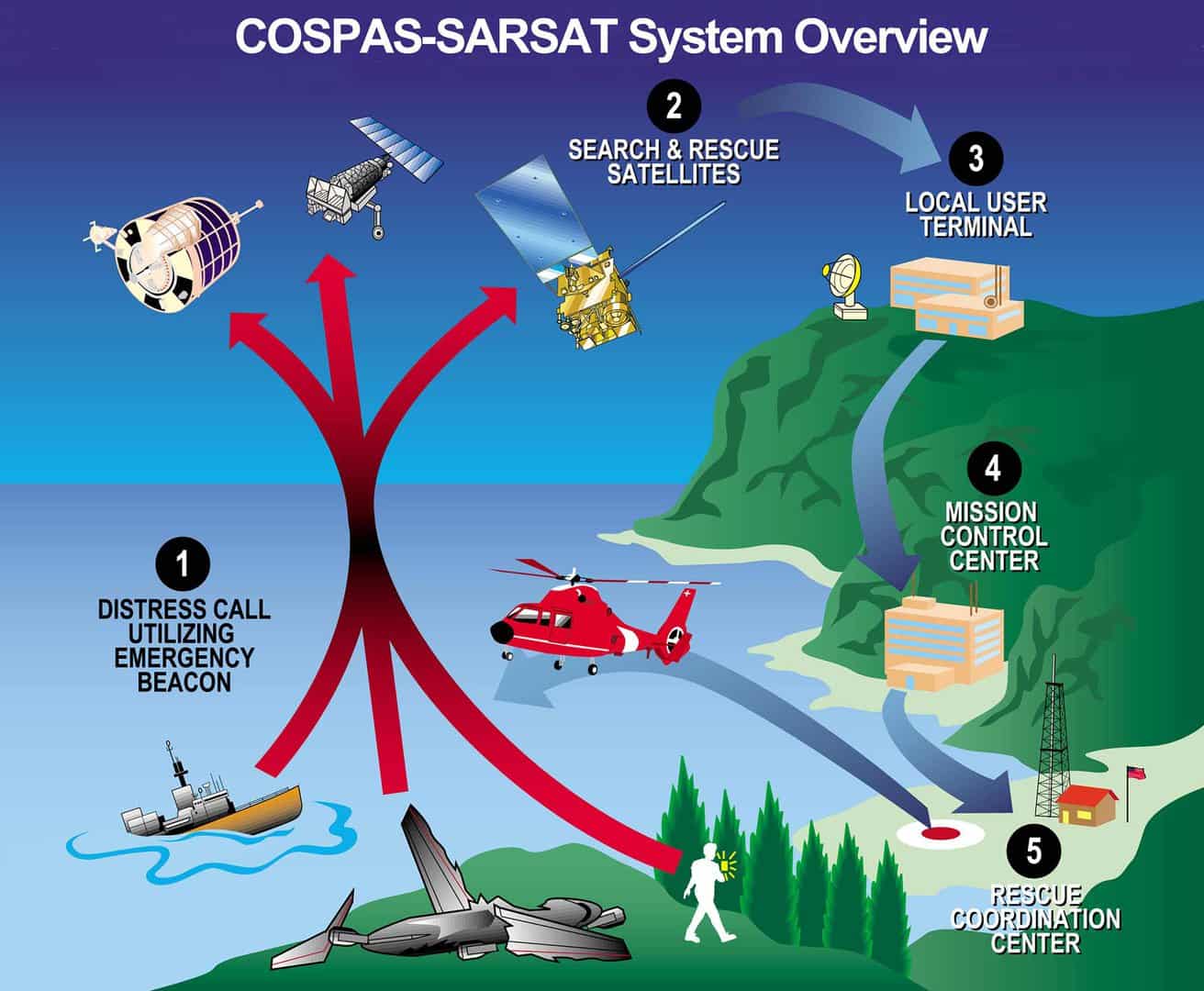What is a Personal Location Beacon?
A personal location beacon is a small portable radio device designed to communicate your physical location to search and rescue crews in the event of an emergency.
The personal location beacon (PLB) acts in similar ways to an emergency position-indicating radio beacon (EPIRB), in that it sends out a radio signal communicating with satellites on the 406 MHz distress network. While an EPIRB is registered and linked to a vessel, a PLB is registered to an individual. In addition, most PLB’s have a secondary signal operating on the 121.5 MHz channel to pinpoint your location to search and rescue teams once they are in the vicinity. These can become especially important in life and death circumstances if you are separated from your vessel.
Another added advantage to the PLB is that they are small enough to carry on your person unobtrusively, inside a life jacket, backpack or coat and can be used in other environments than just marine. Marine PLB’s can be manually activated, and some have the option to activate automatically when submerged in water in the event of a man over board situation.
How Does it Work?
The PLB communicates with the COSPAS-SARSAT satellite network on the international standard radio frequency of 406 MHz. This is the world-wide search and rescue network run globally to help save people in life and death emergencies. Designed to be used when all other means of rescue or communications have failed, these beacons can be activated if your boat is in danger of sinking or if you have a life-threatening accident or medical emergency.
Costs Associated with Owning a PLB
Purchasing a PLB can set you back anywhere from $150 to $500 or more, depending on the features. Registration of your PLB is free. PLB’s all have the minimum ability to communicate with the COSPAS-SARSAT network, to relay your GPS location, run at a minimum of 24 hours, and also broadcast on the 121.5 MHz frequency. Some models also have a flashing LED for nighttime use.
There are, however, a rise in businesses offering PLB rentals for short periods of time. Mainly outdoor and equipment outfitters, they will register the device in your name and train you in the use. This might be a preferable option if you occasionally go out on the water for extended periods of time.
According to the National Oceanic and Atmospheric Administration (NOAA), the use of satellite beacons has already rescued 61 people in 21 incidents in 2018, and more than 43,000 people worldwide since 1982.
Additional Information:
Additional Safety Related Articles:
- 5 Marina Safety Programs & Tips
- Operational Marina Safety Planning
- Choosing a Life Jacket – The First Step to Boating Safety
- 6 Basic Boating Safety Tips and the Stats that Support Them
- Dock Lifeguard Systems ESD Prevention
*Sign up for our free newsletter “Marina Management Journal” so you can stay up to date
About MariCorp
Maricorp is one of the largest floating boat dock manufacturing and construction companies in the United States, specializing in galvanized steel floating docks and boat lift systems. With projects spanning coast-to-coast, Maricorp provides marina consultation and design, marine construction, marina repair and renovation, and boat dock disaster response and demolition.














